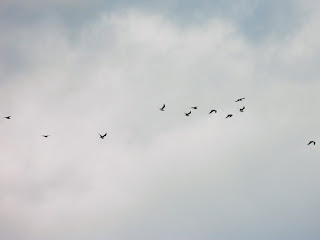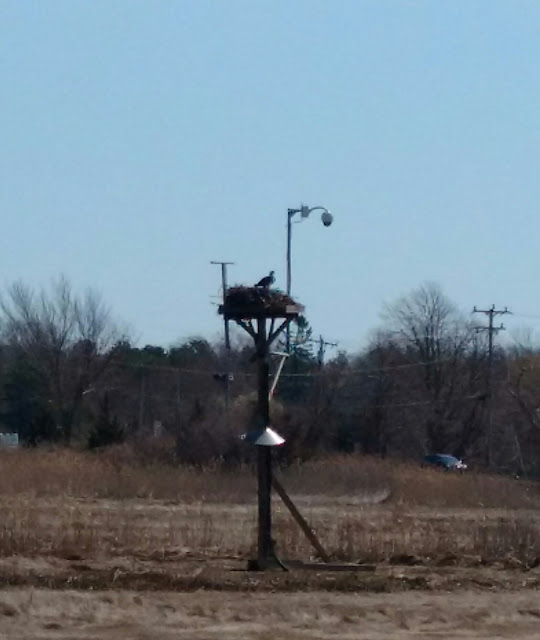South Dennis, MA
Another enrichment class spent outside, is ALWAYS a bonus for me! Today I wanted to focus on one of the specific methods of identifying bird species: field marks. When we spotted the first bird, right on the edge of the parking lot... several of us spotted her/him at the same time, because s/he was making a racket at the top of a tree on the edge of the school parking lot!
I asked what they noticed first about this bird. The color of the feathers, and then... the beak was mentioned. "That bird has a long beak!" I was PROUD! YES! Beaks/Bills are one of the best field marks to take note of when differenciating among bird species. The first bird we saw/heard was a European Starling (see others listed below) and eventually s/he flew off with two other birds...who looked to be other European Starlings.
Then we saw a pair of birds swoop into the low shrubs on the side of the driveway. It was difficult creeping toward them, because there were those in the group who weren't exactly silent...
Patience & Quiet. Two extremely important tips when wanting to get closer to wild birds.
I brought out some of the learning materials that I have for a number of common & relatively well-known species of bird. We discussed the field marks of those birds in the photos and whether or not they were migrants or native avian residents. The Cape is such a unique habitat and how fortunate I get to share it with interested and enthusiastic students at Wixon! (double click photos to enlarge)
Our List:
European Starling
Song Sparrow
Pine Warbler
American Crow
 |
| European Starling |
 |
| European Starling, offering a perfect opportunity for a silhouette lesson |
 |
| Checking out the European Starling |
 |
| American Crow |
 |
| Song Sparrows are in these low shrubs and trees... |
 |
| Comparing notes about European Starlings & Pine Warblers |
 |
| Bird identification cards! |
 |
Happy Birding young Bird Nerds!




















































